Feb 15, 2022 | ANA, coins, commentary, scams
 There was once a time that the American Numismatic Association worked with stakeholders to protect numismatic buyers. The ANA worked with eBay to create marketplace protection rules. They were involved with helping raise awareness to gain the passage of the Collectible Coin Protection Act. But where has the ANA been over the last eight years?
There was once a time that the American Numismatic Association worked with stakeholders to protect numismatic buyers. The ANA worked with eBay to create marketplace protection rules. They were involved with helping raise awareness to gain the passage of the Collectible Coin Protection Act. But where has the ANA been over the last eight years?
Since the passage of the Collectible Coin Protection Act 2014, the ANA has been silent on all aspects of counterfeit coins entering the United States, primarily from China. In the past, the ANA has partnered with China Gold Coin to manufacture Panda silver coins with the ANA logo for the World’s Fair of Money. China Gold Coin is a People’s Bank of China subsidiary that manufactures the Panda bullion coins.
According to the ANA’s website, its mission statement begins:
The American Numismatic Association is a nonprofit educational organization dedicated to educating and encouraging people to study and collect money and related items.
The education process has been lacking in the area of consumer awareness. While some of the topics are covered in their introductory collecting course, are no courses, statements, or seminars about the scams collectors face daily.
Previously, the ANA has used its position as a national organization to work with eBay to make the online marketplace safer for buyers. It is impossible to eliminate all problems, but the result has been a safer marketplace for eBay buyers. It is a program that the ANA can proudly take credit.
But when it comes to Chinese counterfeits, the ANA has been silent.
The ANA must develop a plan to educate the public to help the collecting and investing public how to protect themselves against the scammers.
-
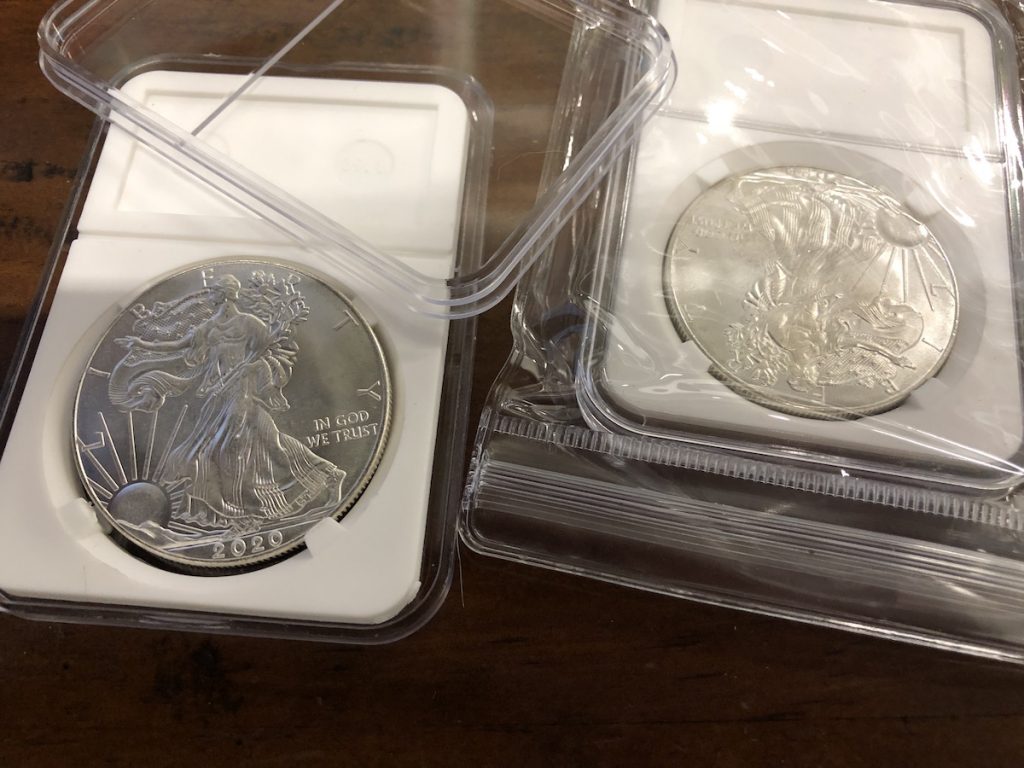
-
Two counterfeit American Silver Eagles purchased from LIACOO, a company based in China who advertised on Facebook.
-
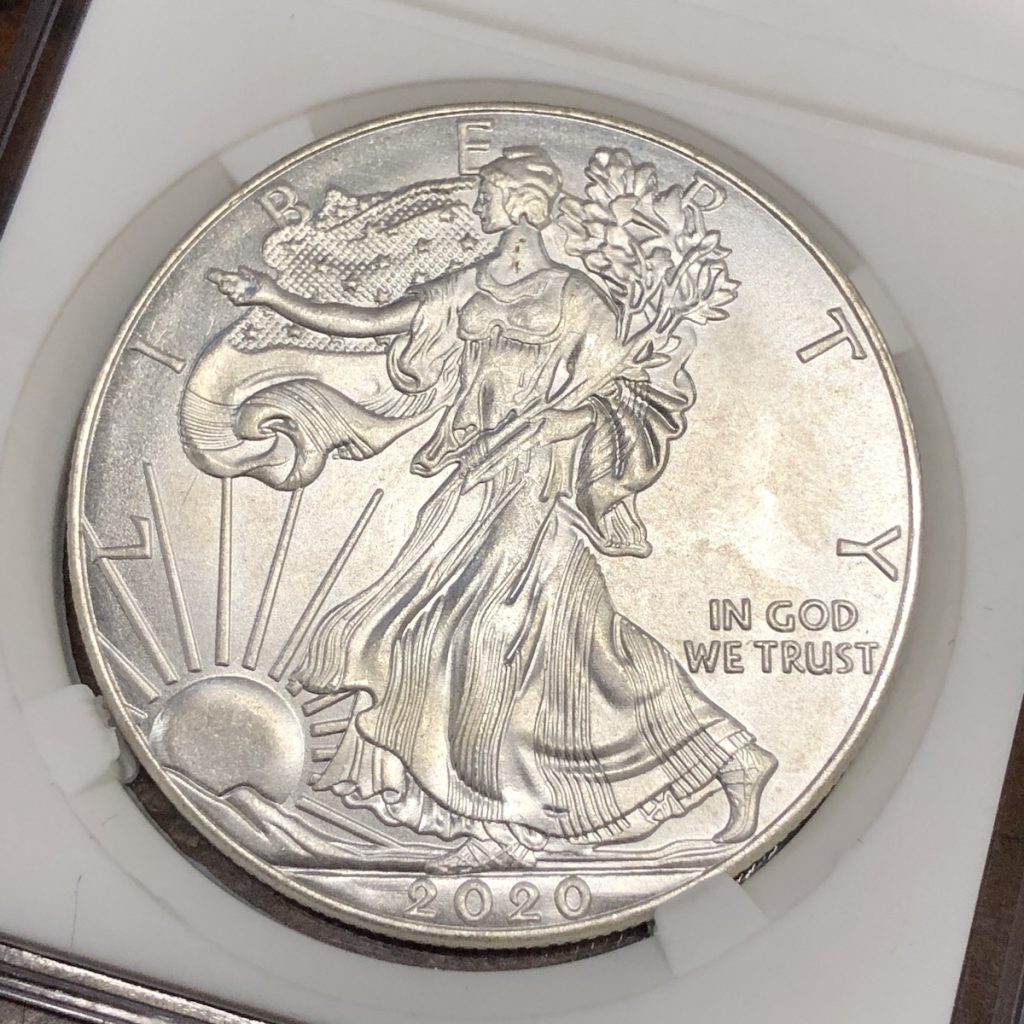
-
The font for LIBERTY is too thin. Also, the stars in her flag draped over the shoulder are too small.
-
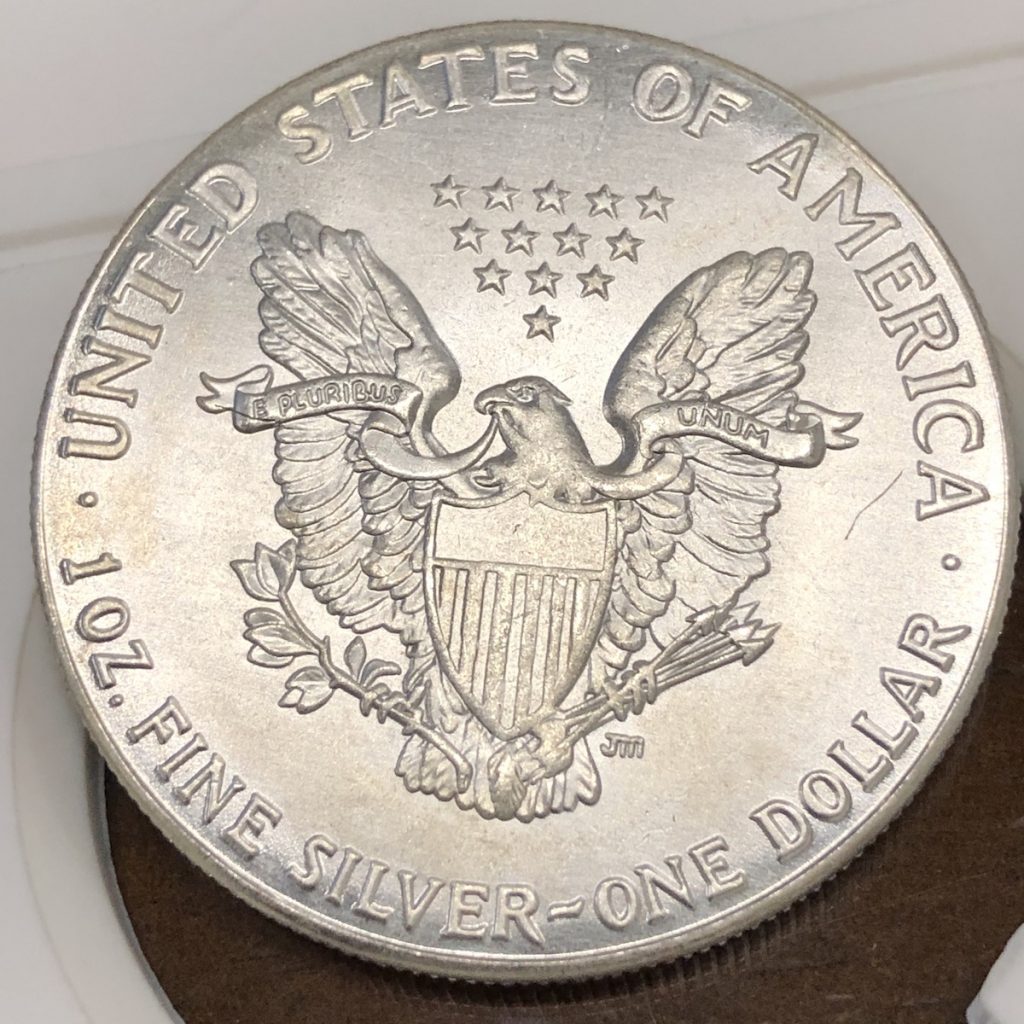
-
Aside from the rims being to thin, look at the U in United and the dash between SILVER and ONE. These are not correct for the 2020 ASE.
While the ANA devises a plan, they can produce videos that teach collectors to avoid scams. The videos can feature the ANA President, prominent dealers, collectors, and anyone who can help deliver a message. Find someone who was scammed to talk about their experience. Two videos can include a guide to examining an American Silver Eagle to determine if it is a counterfeit coin.
The ANA must advertise the release of the videos nationally. While the numismatic press will promote these videos, the promotion must appear in the non-numismatic media. The promotion must go beyond the press release, and Spokespeople must be made available to media outlets catering to a broader audience.
The ANA can craft a plan to educate the collecting and investing public during the video production to protect against counterfeit coins. The plan must continue to educate the collecting public and educate law enforcement and politicians who can become involved with a scammed collector. The ANA can partner with the U.S. Mint, Bureau of Engraving and Printing, and the U.S. Secret Service to add depth to the public education program.
A plan must include working with Facebook to eliminate advertisements for counterfeit coins.
If the ANA Board of Governors does not know where to begin, consider the Ad Council’s campaign criteria to develop a plan. Even if the ANA cannot convince the Ad Council to work with the ANA, they are successful guidelines to publicize this issue.
Feb 14, 2022 | advice, Eagles, education, scams
RANTHY<dot>COM IS A SCAM
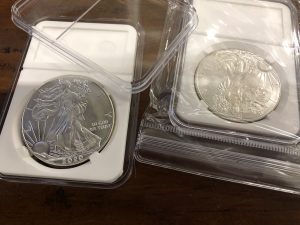
Two counterfeit American Silver Eagles purchased from a company based in China who advertised on Facebook.
NO LEGITIMATE DEALER IS SELLING BULLION COINS FOR BELOW THE SPOT PRICE!
The current price of silver is $23.86 per troy ounce. If anyone is selling American Silver Eagles for less, they are likely selling counterfeit coins.
Questions about the site sent today noted that the scammers advertised these coins on Facebook.
These scammers are not selling 2022 American Silver Eagle counterfeits because the Chinese manufacturers of the fakes have not created bogus Type 2 reverses. Remember, legitimate dealers will sell coins with the Type 1 reserve. They will also sell the coins with the Type 2 reverse.
IF YOU PURCHASED COINS FROM THESE SCAMMERS, contact your credit card company and dispute the charge. If you received the coins and they are counterfeit, contact your credit card company and dispute the charge.
IF THERE ARE ANY QUESTIONS ABOUT A WEBSITE, THEN DON’T PURCHASE FROM THEM!
Sep 21, 2021 | coins, commentary, Eagles, scams, technology

Two counterfeit American Silver Eagles purchased from LIACOO, a company based in China who advertised on Facebook.
Over the last few weeks, I have been counseling several people about requesting a chargeback for receiving counterfeit merchandise. Requesting chargebacks have their problems, too. Some credit card issuers will use the chargeback as an excuse not to renew your credit card.
During this time, another group has been trying to work with Facebook to stop the scammers from reaching consumers.
On Monday, three numismatic groups sent a letter to Facebook Founder Mark Zuckerberg asking why he did not respond to a similar letter a month ago. The letter was signed by Doug Davis, Director of the Anti-Counterfeiting Educational Foundation, Mark Salzberger, Chairman of Numismatic Guaranty Company, and Bob Brueggeman, Executive Director of the Professional Numismatists Guild. You can read the press release and letter here.
It is not surprising that Facebook and Zuckerberg have not answered previous letters. If you watch other media reports about Facebook, the company is notorious for trying to sweep issues under the proverbial rug until something brings it to the forefront. While Facebook claims they are responsive to the communities, they respond solely when someone yells and causes an uproar.
Although some find Facebook useful, it is a cesspool of scammers and trolls playing on the gullible looking to prove P.T. Barnum correct: There’s a sucker born every minute.
News organizations worldwide have reported how criminals use Facebook advertising for crimes, including selling counterfeit merchandise, false activism (e.g., Fake News), and human trafficking.
Facebook’s response has been the same. They promise to try harder and look to add code to help protect their users. The result is that they try to implement a technical solution that works to the point of being able to placated the current activists. The problem is that while Facebook depends on artificial intelligence to protect its platform, company leadership has not shown any real intelligence to understand that there may not be a technical solution to every problem.
It is easier for Facebook to scan for words that someone believes are hurtful than to look at an advertisement selling a one-ounce silver coin for less than its silver value. Besides, the alleged bully is not paying for to have their content distributed to a target audience that includes you.
Facebook really doesn’t care because they are getting paid. They were being paid as late as 2018 by a Russian troll bot for placing activist ads after being admonished for accepting campaign ads paid in Russian rubles in 2016.
Zuckerberg and company do not care. He is getting paid and so is their management. They lie just enough to get past alleged watchdogs in a way to keep confidence in their market price. After all, Facebook stock (NASDAQ: FB) is up 32.25% for the year as of Sep 20, 2021. Why should they care what you think about their advertisers? In the meantime, consumers are getting defrauded by scammers allowed to roam freely by a company that advertises on television as being a place to build a community.
Do not expect help from the government. In between their partisan fighting, members of Congress do not have the knowledge or competence to figure out how to fix the issue. Most members of Congress are lawyers with no technical background nor did any study the technical issues enough to make competent decisions.
Although Congress is to blame, the voters must accept their part of the responsibility. Instead of voting in competent people, they send these old folks with no technical background back to Washington. Many have held their seats for over 20 years without any incentive for advancement. So they grow old without learning new ways and blame everyone else for what they are not doing. Think of the problem like this: 26 of the 100 Senators are 70 years of age or older. None of these people had any experience with computers as students or early in their careers. Most can barely use a smartphone (Steve King actually asked Google CEO Sundar Pichai why his daughter’s iPhone behaved strangely). Even if they did, when was the last time you saw an elderly member of congress with a computer or even a smartphone?
Davis, Salzberg, and Brueggeman will have an uphill battle with Facebook. Everyone does. But the ACEF and PNG need to think beyond talking reason to Zuckerberg. They need to work with Congress to help them understand the technologies and what regulations will be effective without putting undue limits on the technology companies.
NOTE TO THE DAVIS, SALZBERG, AND BRUEGGEMAN:
I know of one person in the numismatic industry that has a background in technology and public policy. This person worked as a contractor to the federal government for 25 years as an information security analyst. This person worked for a PAC concerned with numismatic issues and has a Masters’ with a concentration in information security and technology public policy from Carnegie Mellon University. You can contact this person at
coinsblog.ws/contact.
Aug 2, 2018 | coins, dollar, errors, ethics, scams, US Mint, varieties
This week’s LOOK BACK is my take at the stir made over the positioning of the edge letters on the newly struck George Washington Dollar coins in 2007.
If you search the online auction sites, you will find less than honest sellers trying to sell variations in the positioning of edge lettering of the new George Washington Dollars errors or varieties. Letters that are pointed up, or the top of the letters towards the obverse, are considered “normal” by these sellers. Letters that are pointed downward, or the top of the letters closer to the reverse of the coin, have been called errors or varieties. They are neither.
Exasperating the issue is that one third-party grading service added a designation to their labels with the orientation of the edge lettering.
-
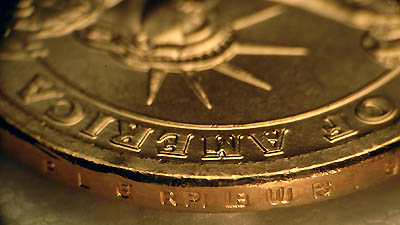
-
According to one third-party grading service, Presidential Dollars With The Tops The
Edge Lettering Facing the Reverse Are Designated As “Position A.”
-
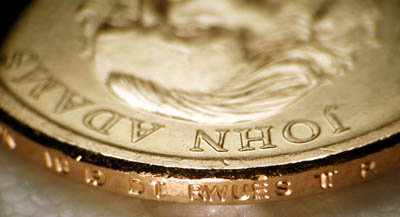
-
Those With The Tops Of Their Letters Facing The Obverse Are “Position B.”
An accepted definition of a variety “is any variation in the normal design of a given coin, usually caused by errors in the preparation or maintenance of the coin dies.” They are also errors caused in the striking process. But these definitions do not account for the differences in the orientation. The problem is that after the planchets are struck into coins by the high-speed coining machines, they are mechanically collected and fed into a machine that will press the lettering into the edge of the coins.
The machine that adds the edge lettering uses a three-part collar to impress the incuse lettering does this without regard to position. not only could the edge lettering face any direction, but the lettering can appear at any position along the edge. The U.S. Mint confirms this by saying that because of “the minting process used on the circulating coins, the edge-incused inscription positions will vary with each coin.”
Since the Mint is saying that the process can vary, these variations are normal for the design. Since these are normal variations, they are not numismatic varieties or errors. Thus, the coins with variations of orientation edge lettering are not worth the premiums being sought online. They are worth their face value of $1.
There have been errors found with the edge lettering. The most infamous has been called the “Godless Dollars” for coins missing their edge lettering and the motto “In God We Trust.” Most of these coins were minted in Philadelphia and discovered in Florida. Others have found doubling of edge letters and what looks like breaks in the three-part collars where letters have moved out of place. These are legitimate errors and worth a premium above face value. Orientation variations of the edge lettering are not errors.
If you want to consider these varieties, please save your money and visit your local bank. You can purchase these coins for face value without shipping and handling fees. If you purchase a 25-coin roll, you can spend the coins you do not want since they are legal tender.
The original article can be read
here.
Feb 22, 2018 | commentary, counterfeit, currency, education, scams, security
It is difficult to turn on the television, read the news, or visit social media without the tragedies of the day smacking us in the face. Although crime statistics are the lowest it has been in generations, there are some crimes that have seen a rise. Those are the crimes that are given the headlines and the most airtime on the news.
Unfortunately, the news extends beyond the mainstream but extends to Main Street.
Numismatics has not been a stranger to the criminal element. If it is not embezzlers using coins to defraud people and governments, there are the counterfeits primarily coming from China. Now there are two new scams that the industry has to watch.
Counterfeiting currency is definitely not a new issue. Counterfeiting the currency that is supposed to be the most secure is something that is now hitting the mainstream, especially in countries that have adopted the use of polymer notes, is important news.
Police in Saskatoon, Saskatchewan has reported the confiscation of 72 bogus Canadian banknotes. Counterfeiters are using a combination of printed plastic sheets and physical cut-and-paste of lower denomination notes to mimic higher denomination notes.
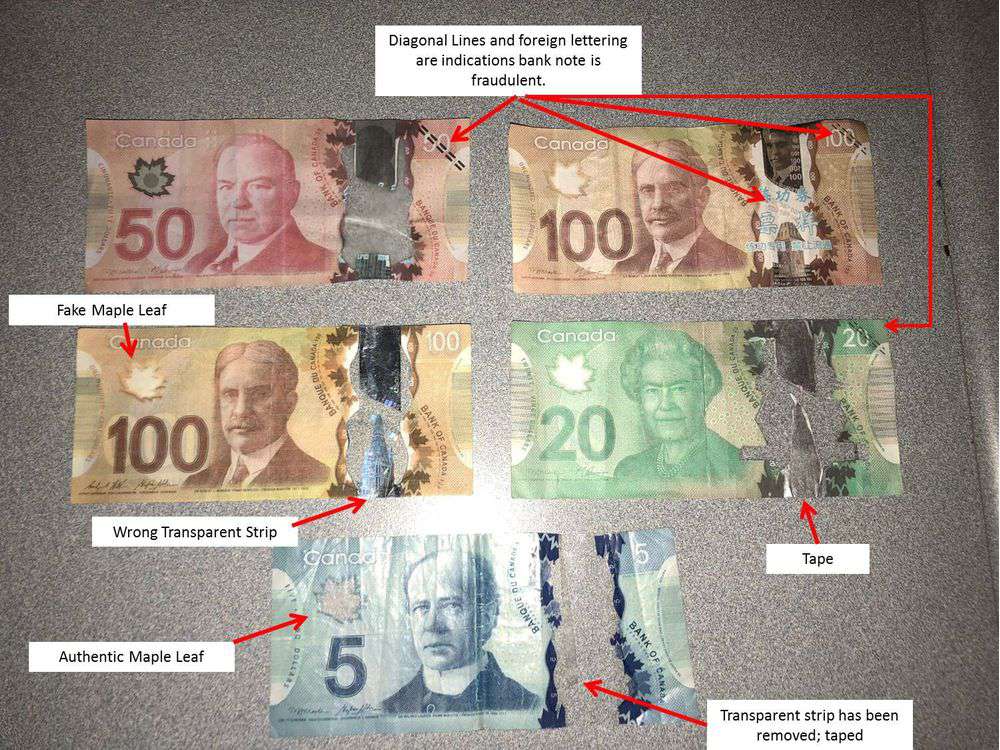
Image released by the Saskatoon Police showing the counterfeit currency (Image courtesy of the Saskatoon Police via the Saskatoon StarPhoenix)
Within the same news feed, the Bank of England issued warnings and additional guidance after counterfeit notes were used for purchases at pubs in Lincolnshire. Many stories from the U.K. suggest that the people do not seem to like the new polymer notes, but this does not seem to help.

Bank of England wants people to watch for the color shifting ink in the quill (Bank of England image)
The Reserve Bank of Australia (RBA), Australia’s central bank and the primary developer of the polymer substrate used around the world, has found that their currency is under attack by industrious forgers. One particular forger found a plastic substrate similar to the polymer developed by the RBA. The forger bought one high-quality commercial printer from the used market and rented two others to print Australian $50 notes.
According to the reports, the $50 note was picked because it provides is common enough to be used in daily transactions (AU$50 is equivalent to US$39.06 as this is being written) and high enough of a denomination to be cost-effective for the forger. Remember, forgery may be a crime but it is a business.

A counterfeit Australian $50 note has the wrong security stripes and the star field on the right is supposed to be clear (Image courtesy of The Sydney Morning Herald)
Although these issues have not directly affected the collectible currency market, it has had an effect on the dealers when their customers pay in cash. Even with the rise of electronic transactions, many European dealers continue to do over-the-counter sales using cash. In some countries, like Germany, cash is still king even when purchasing rare coins.
While discussing these issues with a dealer based in Germany, it was reported that he will not accept large sums of cash from customers he has not done business with in the past. This dealer does not accept credit card payments over 200€ or for any bullion-based transactions. His regular customers can directly wire the funds to a special account the dealer set up. Others must use certified bank checks.
This is not to suggest wire transfers are safe. In a blog post on Kovels.com, they have been contacted by antique dealers that reported money stolen by wire transfers. According to the blog post:
The fraudsters hack your emails and insert their own email, cloned to look like an email from a trusted person, into your email stream. They then request a wire transfer — providing all needed wire instructions — for something that looks legitimate. Once a bank wire is sent, it is extremely difficult, if not impossible, to get the money back. If you need to send a wire, be sure to use “old” technology and confirm on the telephone with someone that you know!
Even though I am no longer in the information security business, it is still my obligation to remind you that EMAIL IS NOT A SECURE FORM OF COMMUNICATION! Email is the electronic equivalent of a postcard. Any message you send, unless it is encrypted, can be read, scanned, snooped, and even altered by anyone, anywhere, at any time.
“Oh, it cannot happen to me!”
I used to hear that line when I taught a senior-level college class on information security. Using a laptop connected to an overhead projector, I was able to show the class how easy it was not only to create spam but to make it look like an email was sent by someone else. I was also able to demonstrate how to read the email traffic on the local network with a few keystrokes. Are you using wireless connections? You just made stealing your information easier for the hacker.
Counterfeiting and wire fraud are not just problems for dealers. When dealers are defrauded by these criminals, they have to recover the money in some way. Insurance does not cover all losses or the extra security that will be required to protect their transactions. Prices will have to go up to cover the losses and the future costs of doing business.
The cost of doing business in this environment is not a trivial subject. While dealers of all types of collectibles want you business, fraudsters are making it difficult for dealers trust the off-the-street buyer. This makes counterfeiting and fraud a problem for everyone.
Jan 10, 2015 | bullion, counterfeit, gold, legal, news, scams
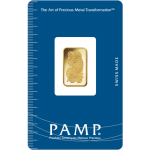
PAMP Gold Ingot
Traveling Suspects Arrested
Two suspects have been arrested for selling fake Suisse Pamp carded gold bars (2.5gm, 5gm,10gm and 1 ounce) at a coin shop in Greenwood, Indiana. Search of the suspects vehicle revealed multiple identification cards, business and pamphlets from different coin shops and an additional 250 fake gold bars and coins. Based upon receipts located in the vehicle the suspects had been selling the fake gold to shops in Illinois, Kentucky, Tennessee and Indiana since September, 2014.
The suspects were driving a silver Ford Focus with Missouri license plates. The suspects are being held for Theft by Deception.
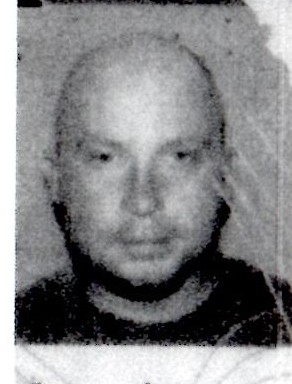
Aaron Taylor
Western Union, IL
Second suspect was identified as Nelson Hernandez (No photo available) alias Benjamin Wade.
Anyone having been in contact with either of these subjects should contact:
Doug Davis, 817-723-7231,
Doug@numismaticcrimes.org
If you have information, please contact Doug Davis. Let’s keep the hobby for both collectors and investors safe!
Mar 12, 2010 | commentary, legal, scams
Over the last few months I have been receiving invites to join Numis Network. Numis Network is a multi-level marketing (MLM) program whose primary purpose seems to have people recruit a network of other interested people and have them join the network. There is a fee to join and a commission that is paid up the organization chart as new members join.
Multi-level marketing goes under many names: network marketing, direct selling, referral marketing, and pyramid selling. Regardless of the name, it is a marketing scheme where the structure creates a marketing and sales force through the use of compensating promoters for selling products but creating additional distributors. The multiple levels creates a type of pyramid where those closer to the top of the pyramid makes the most money. Numis Network exhibits all of the characteristics of an MLM scheme. It emphasizes the network, growing the network, and receiving commission from the network.
It is important to note that a MLM scheme is not the same as a Ponzi scheme (which is what Bernie Madoff did) since there is supposed to be real marketing behind the network. In the case of Numis Network, they try to keep this scheme on this side of legal by touting their compensation is derived from the sales of certified coins. Numis Network uses a binary plan to grow the network using two subtrees, a power leg, which has new members, and the profit leg, which has your direct recruits. The key is supposed to be that your profit leg provides your best chance to make money. However, I found the following in Wikipedia:
In truth this benefit is slight because the new members who are recruited by your ancestors are shared among all the available leaf nodes. For example, your immediate ancestor in the tree only puts half of his new recruits in your downline, on average. Likewise, his ancestor only puts one fourth of his recruits in your downline. Following this argument to the root of the tree, the total approaches just one person recruiting for your downline (1/2 + 1/4 + 1/8 + 1/16 + 1/32 + … + 1/2n, where n is your tree depth). This is often insignificant in comparison to the number of people required in your downline to make yourself profitable.
If you calculate the amount of compensation per person diminishes as the number of downline people increases. In order to make money, you would need to recruit quite a few people and have them buy and/or sell coins in order for you to make a profit.
The only people making money in a MLM scheme are those at the top of the overall pyramid—the root node. Not only are they making money on the your initial purchases, but they are collecting on the commissions from the new recruits, which they earn a share of every one of them since they are at the root of the scheme. Remember, they are also the ones selling the coins. Once you buy the coins to resell, they have made their profit and it is up to you to sell the coins at a higher profit in order to earn a large enough commission.
Most of the people who have sent an email note asking me to join will probably never see a profit. I hope they can earn back their original investment.
While it is legal to create a pyramid scheme whose compensation is based on a real sales commission, the truth of the matter is that the further you are away from the top of the pyramid, the less money you will make. And think about it, how many coins would you have to sell to make a profit and how many coins could be sold? How many coins will you have to sell in order to break even after spending $500 (for the Fast Track Collector’s Kit) or the $75 (Basic option) plus the $9.95 per month for the Numis Network ecommerce website? Think about how the premiums on bullion coins have lowered as the US Mint has raised the supply then ask yourself if there are enough interested customers out there to even sustain the effort.
Since Numis Network is located in Tampa, Florida you may want to familiarize yourself with the well written advice from Florida Attorney General Bill McCollum. If there are any questions, you may want to contact Attorney General McCollum’s office for assistance.
While Numis Network may technically be legal I question its ethics. It is something I would never be involved with. If someone were to ask me for advice I would suggest that you not involve yourself with this program.
Mar 8, 2007 | coins, dollar, errors, scams, varieties
If you search the online auction sites, you will find less than honest sellers trying to sell variations in the positioning of edge lettering of the new George Washington Dollars errors or varieties. Letters that are pointed up, or the top of the letters towards the obverse, are considered “normal” by these sellers. Letters that are pointed downward, or the top of the letters closer to the reverse of the coin, have been called errors or varieties. They are neither.
An accepted definition of a variety “is any variation in the normal design of a given coin, usually caused by errors in the preparation or maintenance of the coin dies.” They are also errors caused in the striking process. But these definitions do not account for the differences in the orientation. The problem is that after the planchets are struck into coins by the high speed coining machines, they are mechanically collected and fed into a machine that will press the lettering into the edge of the coins.
The machine that adds the edge lettering uses a three part collar to impress the incuse lettering does this without regard to position. not only could the edge lettering face any direction, but the lettering can appear at any position along the edge. The US Mint confirms this by saying that because of “the minting process used on the circulating coins, the edge-incused inscription positions will vary with each coin.”
Since the Mint is saying that the process can vary, these variations are normal for the design. Since these are normal variations, they are not numismatic varieties or errors. Thus, the coins with variations of orientation edge lettering are not worth the premiums being sought online. They are worth their face value of $1.
There have been errors found with the edge lettering. The most infamous has been called the “Godless Dollars” for coins missing their edge lettering and the motto “In God We Trust.” Most of these coins were minted in Philadelphia and discovered in Florida. Others have found doubling of edge letters and what looks like breaks in the three-part collars where letters have moved out of place. These are legitimate errors and worth a premium above face value. Orientation variations of the edge lettering are not errors.
If you want to consider these varieties, please save your money and visit your local bank. You can purchase these coins for face value without shipping and handling fees. If you purchase a 25-coin roll, you can spend the coins you do not want since they are legal tender.
 There was once a time that the American Numismatic Association worked with stakeholders to protect numismatic buyers. The ANA worked with eBay to create marketplace protection rules. They were involved with helping raise awareness to gain the passage of the Collectible Coin Protection Act. But where has the ANA been over the last eight years?
There was once a time that the American Numismatic Association worked with stakeholders to protect numismatic buyers. The ANA worked with eBay to create marketplace protection rules. They were involved with helping raise awareness to gain the passage of the Collectible Coin Protection Act. But where has the ANA been over the last eight years?










